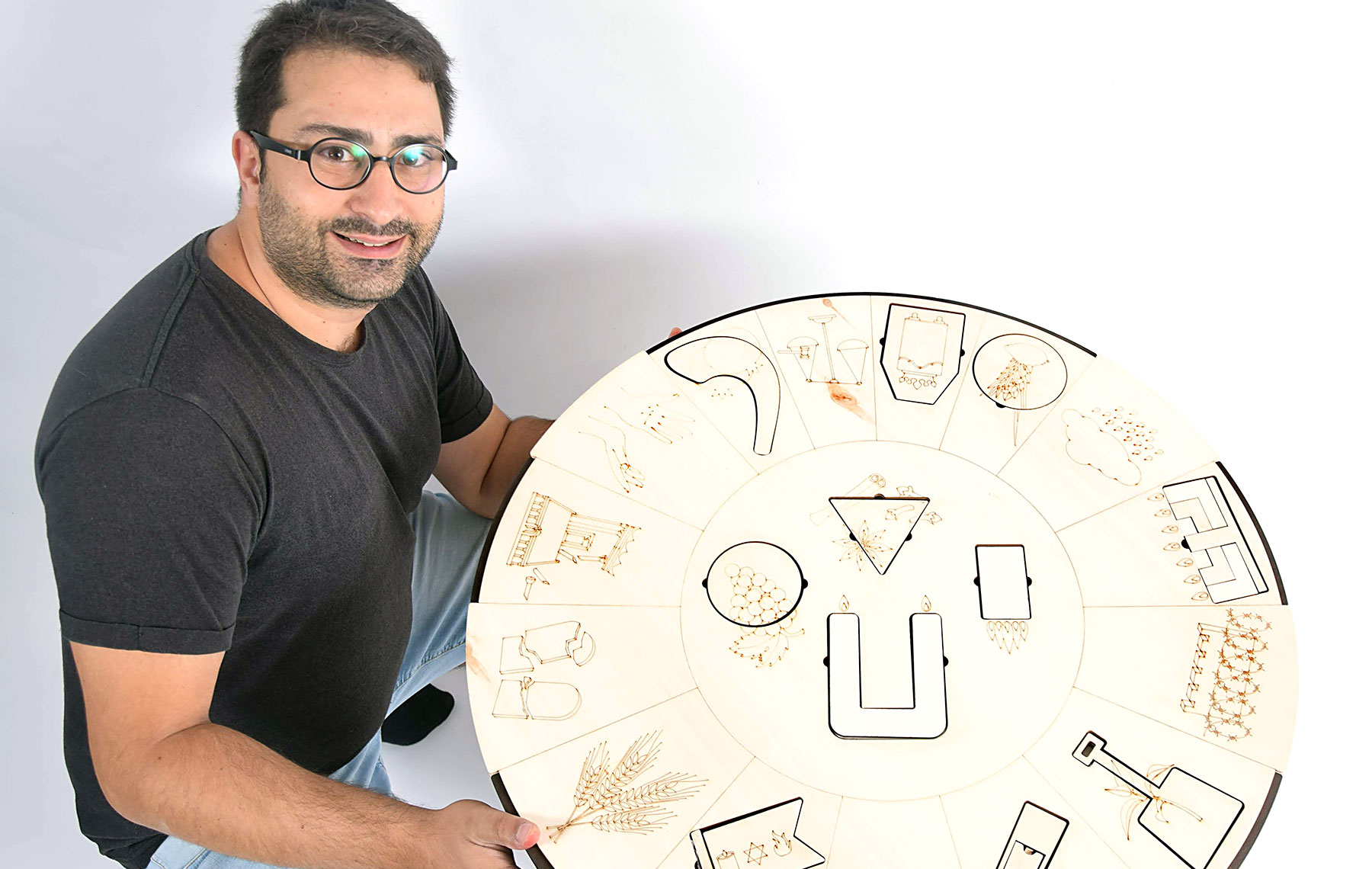 Avi Pashnov
Avi Pashnov Award-winning artist Avi Pashnov has spent his career merging art and Judaism. As a teaching assistant in the Judaica Department at Bezalel Academy of Arts and Design in Jerusalem, he has tried to make people think and feel through his 3-D creations. His latest invention is a freestanding 3-D Judaica game for children called Ezrat Yeladim that focuses on all the Jewish holidays. He was inspired to create it after seeing parents struggle to keep their young children engaged — and quiet — during Shabbat services. Multiple children can participate in forming the puzzle, which includes things such as the Ten Commandments, a Kiddush cup and a shofar. The goal is for children to engage with one another and connect to Judaism in a hands-on way.
Jewish Journal: How did you come up with the idea for Ezrat Yeladim?
Avi Pashnov: Every Shabbat, when I would watch the children play in the courtyard of my synagogue in Jerusalem, I wondered why they were not inside, sitting next to their parents praying. I realized they come to synagogue for social reasons; to interact and play games with their friends. Parents, on the other hand, bring their children to absorb the atmosphere and learn more about their religion, to enhance their connection to Judaism. That’s when a light bulb went off — to combine the needs of the parents and the wishes of the children in a single object.
JJ: Do you see this as something that can turn into a series?
AP: There are gaming elements in my other works, but they are mainly conceptual. This was created and designed as a game focused on the entire Jewish cycle that combines all of the Jewish holidays and traditions from a Jewish child’s point of view. That said, this project could certainly continue to develop and acquire additional layers, turning it into a series.
JJ: What was your design process?
AP: The design process was the most interesting part. I started off by researching all the different components one step at a time, including Jewish holidays, Judaica, games, children’s likes and dislikes, the materials I could use, and the concept I was toying with.
I drafted my ideas on a two-dimensional drawing as well as building 3-D models of them and then slowly collected original materials from everything I created and centered them into one whole idea. It took me about a year to develop the object, though I had been thinking about it for a few years. I would like to also give credit to Yaron Ronen, Yossi Farkash and Bezalel Academy professor Vered Kaminski for their support on the project.
JJ: Why did you want to work on a kids’ project?
AP: As a creator, I always try to generate meaning in my work, to make people think and feel things. Here I have the ability to use my tools to create and teach small children. There is no greater satisfaction than that.
JJ: What age is the project designed for?
AP: The game was intended for children ages 4 -12, when they are taught Chumash and Mishnah. But with time, I was pleasantly surprised to discover that adults also enjoyed playing the game, sometimes even more than the children.
JJ: Can you talk a bit about the Shabbat themes and images that are displayed in the game?
AP: When you first look at the game, you see a board with icons that remind you of the different occasions and dates throughout the year. They were all created from a child’s point of view. They are arranged in a circular design and surround a smaller inner circle, which is where the Shabbat icons appear.
After looking at the icons, you suddenly discover that there are layers of icons that can be pulled out of the board, exposing a whole world of parts and shapes that become three-dimensional Judaica tools that are also designed from a child’s point of view.
For me, Shabbat is the center of the Jewish experience, and this highlights that perspective.
“I realized children come to synagogue for social reasons; to interact and play games with their friends.”
JJ: What is your favorite part of Shabbat and is that incorporated into the game?
AP: One of my favorite Shabbat traditions is the Havdalah ceremony. It is unique in that it makes connections between different experiences. I incorporated this into the game with the box of besamim (spices), illustrated with icons such as cloves and cinnamon, which are used in most Ashkenazi communities. The structure of the box is triangular to symbolize the binding of the spices coming from Eastern countries.
JJ: Where can people find this game?
AP: The object, which has a didactic dimension and was designed so that a number of children can play it at the same time, is intended for schools, kindergartens and the synagogue courtyards. I am hoping that interested parties contact me directly, because I am able to adapt the game according to the needs of each specific customer and how they envision it being used.
To learn more about Ezrat Yeladim, email pashiavi@gmail.com.























 More news and opinions than at a Shabbat dinner, right in your inbox.
More news and opinions than at a Shabbat dinner, right in your inbox.